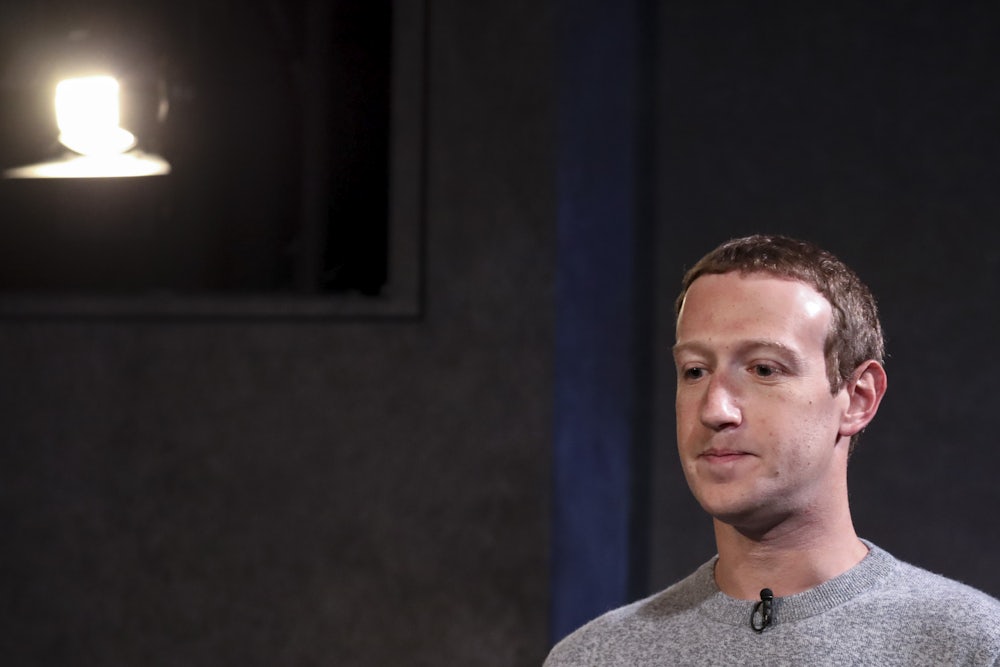For a company that says it’s not a publisher, Facebook just can’t stay away from the news industry. According to Axios, Facebook is testing a tool for journalists to build websites and newsletters that can host text, video, status updates, and other content. The company plans to pay some writers while eventually opening the program more widely. The social media giant, says Axios, is “trying to help find ways individual journalists can thrive as creators.” LinkedIn and Twitter, which earlier this year purchased a newsletter platform called Revue, have similar plans in development to pay writers or allow them to monetize their work.
Axios’s use of “creators” is the tell. Independent journalists and writers are now much like any other digital influencer or content producer, following the money from platform to platform. It risks becoming an endless hustle, the constant accumulation of followers and efforts at self-monetization, the core product being almost as important as all the other trappings of being a digital personality. Under these terms, any tech company can start to seem like a welcoming partner, if not a beneficent institution.
In recent months, the beleaguered media world’s collective fascination has centered around Substack, a venture capital–backed newsletter platform that has attracted some big name journalists, sometimes with big cash offers. For some journalists, it’s become a career lifeline. As New Republic contributor Clio Chang wrote in the Columbia Journalism Review, Substack offers a tantalizing possibility of empowerment: “a wandering journalist, disenchanted by an industry that was never all that equitable to begin with and is now in financial free fall, could, perhaps, claim control of her work.”
Backed by more than $15 million in venture capital funding, Substack has grown quickly, but like many platforms that aspire toward what they call editorial neutrality, it’s found itself charged with favoring certain types of writers—largely white, male contrarians with a talent for Twitter theatrics—and with perpetuating some of the industry inequities it claims to solve.
Even with its accumulating baggage, Substack still qualifies as a success. It does so while picking favorites. The company has paid a number of writers—through fellowships, grants, and its Substack Pro program—but the deal terms are often unknown. (The writer Rick Paulas has put together a list of people who he believes are part of the Substack Pro program.) The site is very much a long-tail operation, where perhaps a few dozen lucky ones will make a good living and the rest will shake their cups for meager rewards. (Which, again, sounds a lot like the conventional media system these companies claim to disrupt.)
None of this is to exalt the role of traditional newsrooms, lately experiencing their own existential crack-up over issues ranging from austerity budgets to racism in the newsroom. The story of twenty-first-century digital media woe hardly needs recapitulation. Owners have killed thousands of jobs, never to return, as Facebook and Google gobbled up advertising revenue while luring media companies to chase search engine optimization, video views, and various illusory traffic metrics. Although a wave of unionization among digital outlets has led to considerable gains in industry standards, cyclical layoffs feed overall instability. Even within some legacy publications, resources and standards can vary significantly, with underpaid young journalists expected to chase the viral news of the day while established stars leisurely file their latest beat-sweetener. At The New York Times, David Brooks continues to write a numbingly boring column while pulling down a second salary from Facebook; the once vaunted terrorism reporter Rukmini Callimachi remains on staff, despite many reporting failures.
There are no easy choices. For some independent writers, a Substack-like newsletter platform represents the future of media—or at least the next viable thing until we are all once again “disrupted” into joblessness. But Facebook represents a concern of a different order than even Substack.
Imagine Facebook—with its data-driven, amoral attitude toward publishing, where everything truly is just “content” coming down the production line—deciding to give deals to some of its most popular media personalities. If Facebook’s building out a content operation, it would only be logical to cement business ties with right-wing personalities Ben Shapiro and Dan Bongino, whose posts—chock-full of hateful disinformation—are often among the most shared on Facebook. The company could at once fight off accusations of anti-conservative bias while establishing itself as a platform open to a “diversity” of views. And the scale and promotional opportunities it can offer media personalities would be unprecedented, far beyond anything available to Substackers. Rather than a newsletter company, Facebook would be operating more like cable news or YouTube, minting the next generation of multiplatform stars.
Circled by private equity firms and vulture capitalists; riven by technological disruption, labor strife, and culture wars; buffeted by a loss in credibility and the rise of conspiracies; and thoroughly dominated by, and dependent on the distribution systems of, tech monopolies—the media business remains in serious trouble. The promised democratization of “citizen journalism” has opened doors for some, but like many digital-era prophecies, it hasn’t been as liberating as hoped. In the coming years, we are likely to see a further fracturing of journalism, both as an industry and in terms of what it means to be a journalist. A political pundit posting on Substack or Facebook may end up having more in common with a Twitch streamer than a New York magazine reporter. But all of them will have to eat, and in our dim journalistic future, it may not matter who’s writing the checks.








